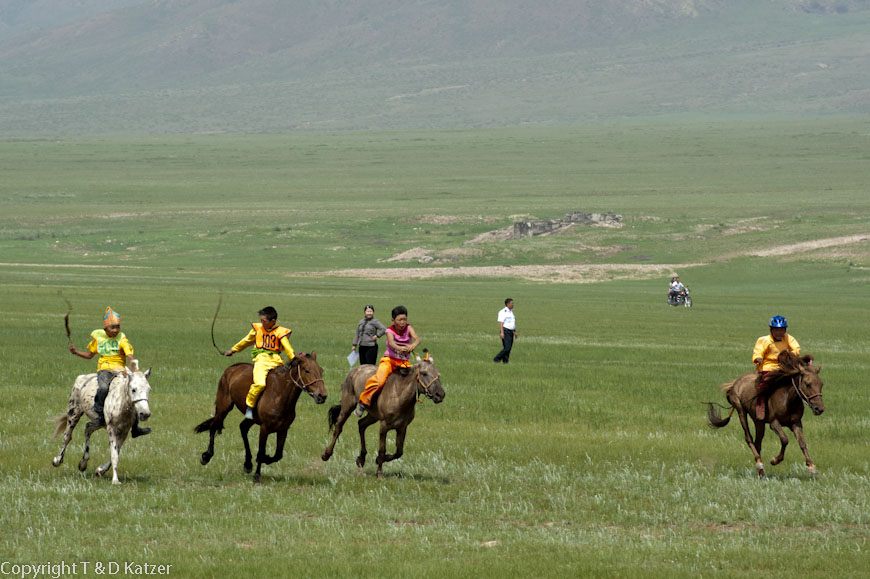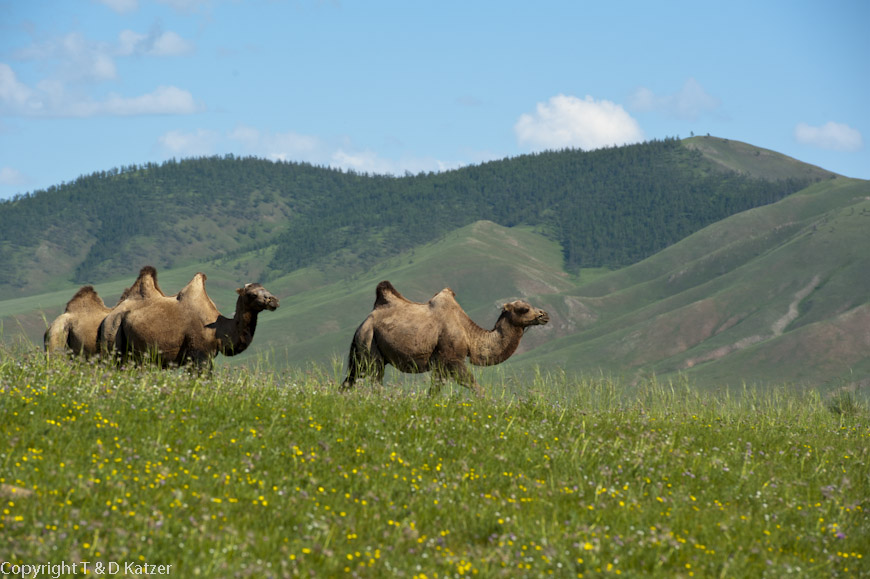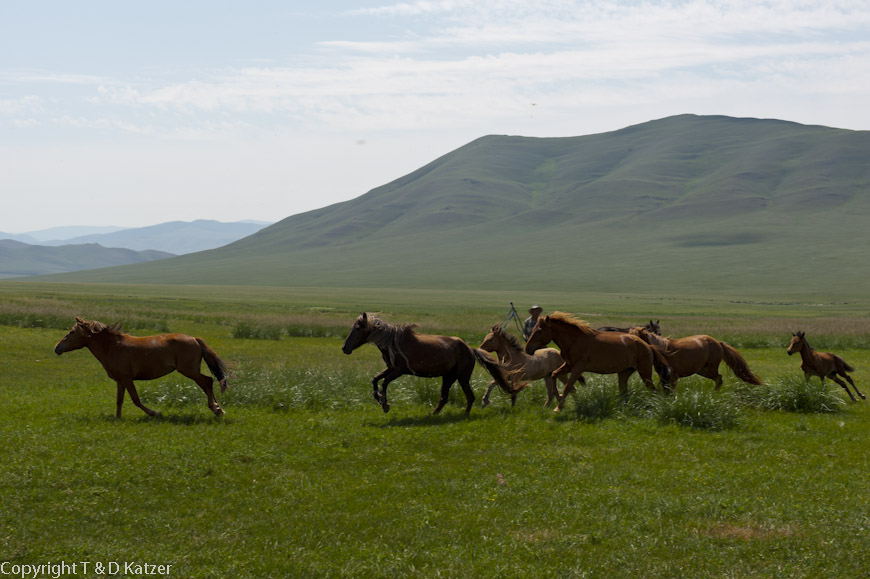
Tenth summary – different than planned
N 47°55'228'' E 106°54'881''
Day: 441
Sunrise:
07:00
Sunset:
18:19
Total kilometers:
2925
Soil condition:
Asphalt
Temperature – Day (maximum):
10 °C
Temperature – day (minimum):
minus 3°C
Temperature – Night:
minus 7 °C
Latitude:
47°55’228”
Longitude:
106°54’881”
Maximum height:
1267 m above sea level








Our camp between the yurts of Renjindorj and Ilchelaugsuren will also remain an unforgettable memory. On the very first morning, Tanja was bitten by the dog when she went to Renzindorj’s yurt. One night, two men again drove a herd of 100 horses through our camp. They pretended to be shepherds. Because of our negative experiences, the high adrenaline level made our hearts pound like crazy. I approached them in an unfriendly manner and they left laughing.
Our horses also suffered from pressure sores. Thousands of flies laid maggots in a small open spot on Bor’s back, which we had to remove with tweezers. We suffered from daily temperature fluctuations of up to 52 °C, found out that the authorities did not want to extend our visa, which put the rest of the expedition trip in jeopardy, and were soon hit by storms and torrential rain every day.
On some days, for example, when the nasty storm clouds opened up on the surrounding mountains and poured their wet contents onto the maltreated land as if they wanted to drown all life, it was particularly bad. Suddenly a strong wind came up. Before we were able to react, gusts of wind had torn away the canopy. I closed the main entrance to the balloon-like inflated fabric house just in time. Another gust hammered into the fabric at around 60 km/h. It was only a matter of time before the tent poles broke. Whenever a gust of wind of force seven or eight hit the tent, it literally deformed into a U shape. We watched spellbound as the water collected in our awning. A veritable river squeezed its way under the sleeping mats. To protect our cameras and laptops, we put them on the still-dry camping mats. The water level in the awning quickly rose to 10 centimeters. All the equipment was flooded. One of my shoes floated away like a small boat. The rain lashed against the canvas with brutal ferocity. The pressure was so high that water even penetrated into the sleeping cabin. It ran along the fabric and fed the lake at the bottom. We thought about how we should protect our technology if the water continued to rise. Fortunately, the heavy storm passed before the water level caused us to drown. We were hit by light and heavy thunderstorms every day at this time of year. To counteract the renewed danger of drowning in a torrent, I pitched our tent at a higher point the next day.
Tanja rode into town on Ilchelaugsuren’s motorcycle to replenish our supplies. I arrived in Mörön in the same way to visit the famous Naadam festival, where the best wrestlers, archers and horse racers competed.
We had actually planned to continue from Mörön with our horse-drawn wagon, which we had parked at Saraa for the winter. But the prerequisite for this was Bilgee, who we needed as a third man to be able to harness a horse to the wagon. As expected, he was delayed several times and in the end we decided to ride the remaining 400 km to Erdenet without a horse-drawn cart and bilgee.
Because our saddles gave the horses bad pressure points, I was now forced to fit Mongolian and Russian saddles with better contact surfaces. A job that took weeks and kept us in that camp for an unexpectedly long time. Although we were running out of time, the long stay was important for the horses. This allowed the pressure sores to heal completely.
We met Badamsuren and her daughter Nyamka who immediately fell in love with Mogi and as fate would have it, Mogi found a new home with them after the trip.
On August 13, we received the good news that our stay in Mongolia had been extended by three months. Now nothing stood in the way of the rest of the journey. The saddles I had made fitted, the pressure sores on the horses had healed, we had given away some of the equipment that didn’t fit on the horses’ backs to our hospitable and amiable neighbors and were convinced that we could manage the remaining 400 km without Mongolian companions.
We look forward to your comments!

